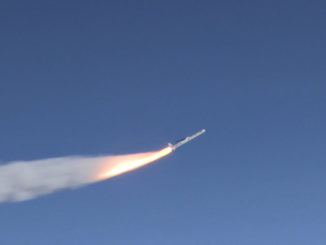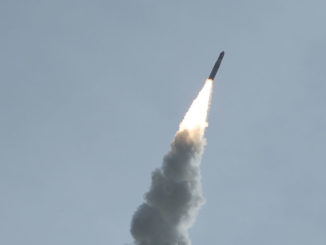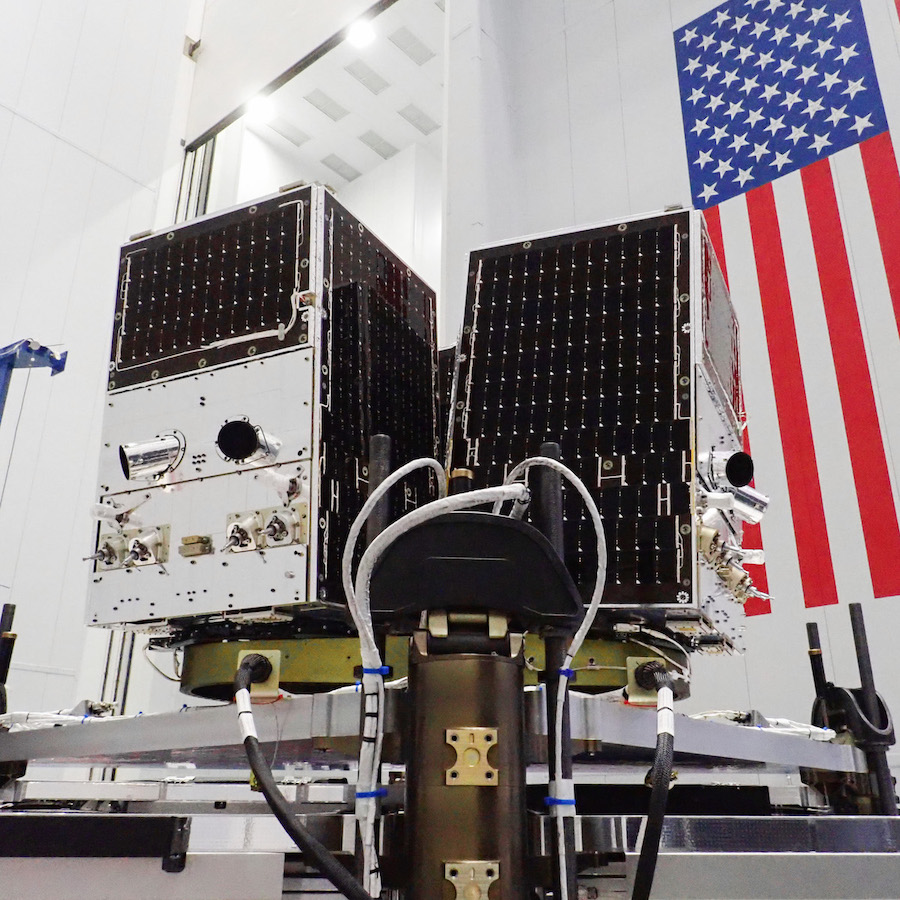
The last planned batch of high-resolution SkySat commercial Earth-viewing reconnaissance satellites owned by Planet will accompany 58 Starlink broadband relay stations on a climb into orbit Tuesday from Cape Canaveral on top of a SpaceX Falcon 9 rocket, adding to the world’s two largest commercial satellite fleets.
The SkySats will join 18 others Planet has launched aboard U.S., European and Indian rockets since 2013, supplying regularly-updated sharp images of the world’s cities, forests, farms, waterways, and other regions of interest to government and commercial users.
Planet’s next three satellites — named SkySats 19, 20 and 21 — are affixed atop a stack of 58 SpaceX-built Starlink satellites inside the payload fairing of a Falcon 9 rocket.
The 229-foot-tall (70-meter) Falcon 9 rocket is set for liftoff at 10:31:16 a.m. EDT (1431:16 GMT) Tuesday from pad 40 at Cape Canaveral Air Force Station. The rocket’s first stage will be making its sixth flight, a record for SpaceX’s fleet of reusable Falcon boosters.
SpaceX says the first stage set for launch Tuesday, designated B1049 in SpaceX’s fleet, first flew from Cape Canaveral in September 2018 in the launch of Telesat’s Telstar 18 VANTAGE communications satellites. After landing on a SpaceX drone ship, the booster launched again from California in January 2019 with 10 Iridium voice and data relay satellites, and again returned to a propulsive touchdown on an offshore recovery vessel.
The Falcon first stage launched three more times with satellites for SpaceX’s Starlink broadband network, most recently on June 3. SpaceX says the Falcon 9’s first stage booster is capable of at least 10 flights without a major overhaul, though engineers perform routine inspections and refurbishment between each mission.
SpaceX rolled the Falcon 9 rocket with the Starlink and SkySat payloads from its assembly building to Cape Canaveral’s Complex 40 launch pad Sunday, then raised the launcher vertical and loaded it with super-chilled kerosene and liquid oxygen propellants for a brief test-firing of the first stage’s nine Merlin engines at 6 a.m. EDT (1000 GMT) Monday.
The launch team drained the rocket’s propellant tanks and examined data from the routine test-firing before proceeding with final preparations for Tuesday’s mission — SpaceX’s 13th launch of the year, the 91st Falcon 9 launch overall, and the 99th orbital launch attempt in SpaceX’s history.
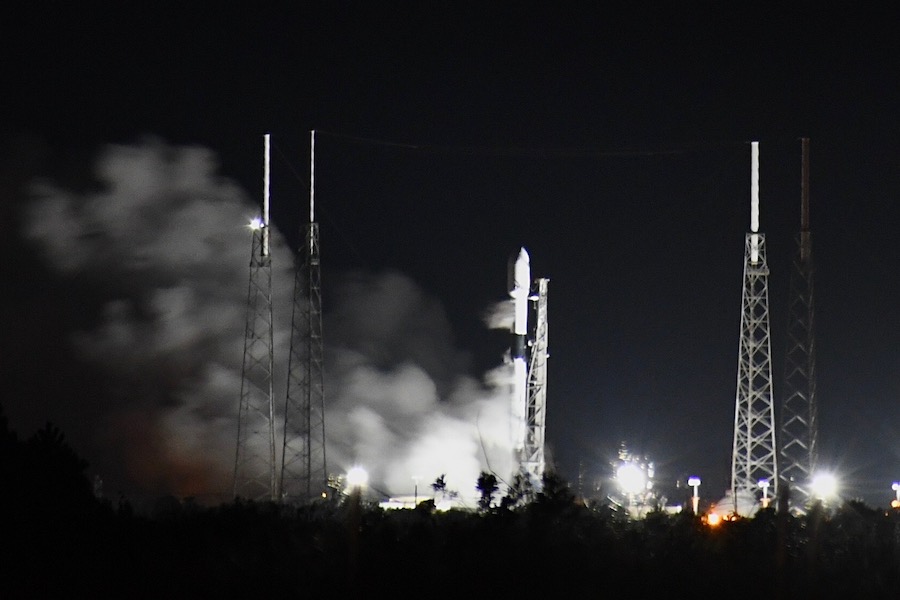
Forecasters from the U.S. military’s 45th Space Wing at Patrick Air Force Base near Cape Canaveral predict an 80 percent chance of good weather for the Falcon 9 rocket’s instantaneous launch opportunity Tuesday. The primary weather concern is with the potential that conditions might violate the cumulus cloud rule.
In a forecast issued Monday, meteorologists predict partly cloudy skies Tuesday morning, but there’s a chance of rain showers in the area around Cape Canaveral. Winds should be from the southwest at 7 to 12 mph, with a temperature at launch time of around 83 degrees Fahrenheit.
The Falcon 9 rocket will head northeast from Cape Canaveral after blasting off from pad 40, flying on a course roughly parallel to the U.S. East Coast to align with the Starlink satellites’ planned orbital inclination of 53 degrees.
Two-and-a-half minutes after liftoff, the Falcon 9’s first stage will shut down its nine Merlin engines and separate to begin a descent toward SpaceX’s drone ship “Of Course I Still Love You” positioned in the Atlantic Ocean around 400 miles (630 kilometers) northeast of Cape Canaveral.
After ignition of the Falcon 9’s upper stage engine, the rocket will shed its clamshell-like payload shroud at T+plus 3 minutes, 12 seconds. The two halves of the nose cone will come back to Earth under parachutes for retrieval by a pair of SpaceX recovery boats.
SpaceX says the fairing flying on Tuesday’s mission is also reused from a previous Falcon 9 launch.
The first stage — fitted with deployable landing legs — will target a vertical landing on SpaceX’s drone ship at T+plus 8 minutes, 42 seconds. Moments later, the second stage will shut down its engine after placing the 58 Starlink satellites and three SkySat payloads in an elliptical orbit stretching more than 200 miles (300 kilometers) above Earth.
The three SkySats — each with a mass of about 242 pounds (110 kilograms) — will separate one-at-a-time from the forward end of the Starlink satellite stack at 30-second intervals, beginning around 12-and-a-half minutes after liftoff.
The Falcon 9 will later release retention rods holding the 58 Starlink satellites, allowing the flat-panel broadband relay nodes to fly free of the rocket around 46 minutes after departing Cape Canaveral.
The SkySats set for launch Tuesday are the last three planned by Planet, which operates around 150 satellites enabling daily worldwide imaging coverage. The SkySats offer Planet’s customers high-resolution views of Earth, while a flock of more than 100 smaller Dove CubeSats provide wider area coverage at lower resolution.
Planet launched three identical SkySats on a Falcon 9/Starlink launch June 13, and the three new spacecraft launching this week will bring the SkySat fleet to 21 satellites.
Built by Maxar, each SkySat satellite is about the size of a mini-refrigerator.
Beginning in 2013, the first 15 SkySat satellites launched into polar sun-synchronous orbits and fly in in north-south paths around Earth. Sun-synchronous orbits are popular for remote sensing and environmental satellites because they allow regular imaging of the Earth’s surface with the sun at the same angle.
Around half of the SkySats fly in orbits timed to fly overhead in the morning, and the other half soar over imaging targets in the afternoon, providing coverage of certain parts of the globe twice per day.
The three SkySats launching Tuesday are the last of a block of spacecraft ordered from Maxar, formerly known as SSL, by Skybox Imaging. Skybox was acquired by Google and renamed Terra Bella in 2014, then Planet acquired Terra Bella and the SkySat assets in 2017.
The SkySats taking off on rideshare missions with SpaceX’s Starlink satellites fly at a lower-inclination orbit inclined 53 degrees to the equator. Planet says the new satellites “will offer more targeted coverage and raw image capacity in key geographic regions.”
“By taking advantage of SpaceX’s rideshare program, we were able to get these satellites launched much faster compared to a dedicated launch,” wrote Mike Safyan, Planet’s vice president of launch, in a blog post on the company’s website.
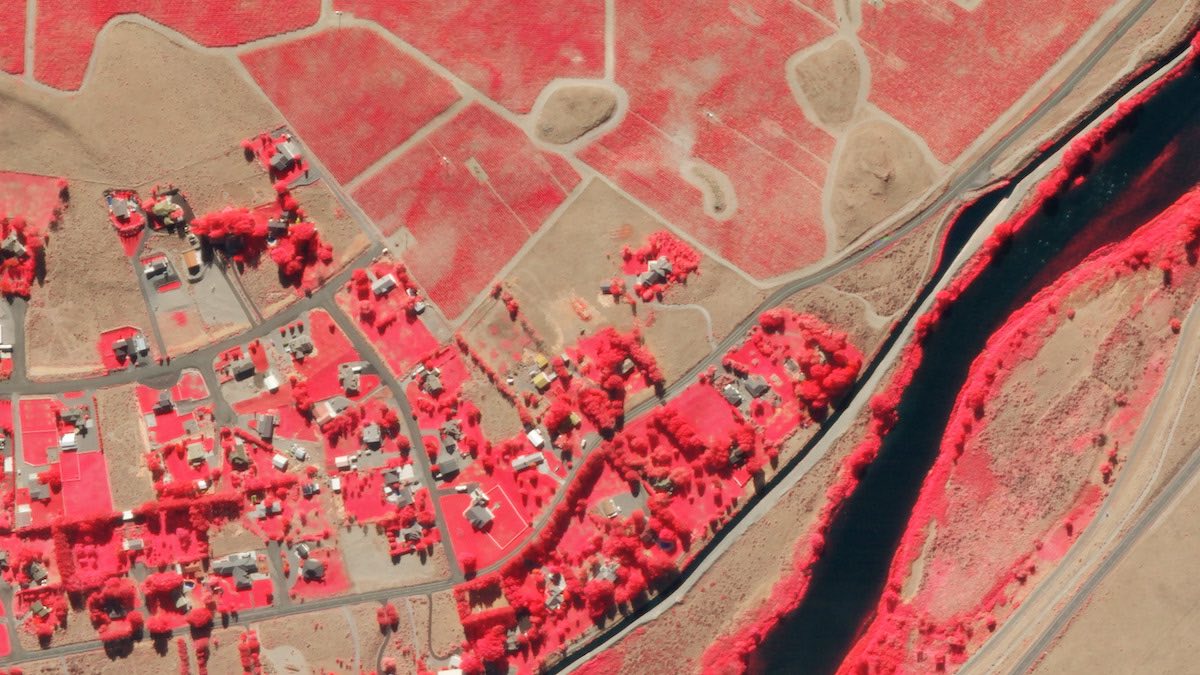
After delivery in orbit by the Falcon 9 rocket, the SkySats will use their own propulsion to maneuver from the Starlink injection orbit to an operating altitude of around 250 miles (400 kilometers).
At that altitude, the SkySats will be able to produce images of Earth at a resolution of less than 20 inches, or 50 centimeters. Planet announced it has also lowered the orbits of its SkySats already in space to allow the collection imagery of the same quality.
In an interview with Spaceflight Now in June, Safyan would not disclose what Planet paid SpaceX to launch the six SkySats, SpaceX has published pricing for rideshare launch services on its website. The company lists a price as low as $1 million for a 440-pound payload on a rideshare to a polar sun-synchronous orbit.
“That’s incredibly competitive pricing,” Safyan said in June. “Coupled with the fact that the Falcon 9 is one of the world’s most reliable and well-flown vehicles out there, and they’re going to a variety of orbits very regularly, makes it a very attractive offering.”
The SkySats are designed for six-year missions, according to Planet. There are no more SkySats currently in production by Planet and Maxar.
“That gives us a pretty long runway with respect to what these SkySats will be able to provide,” Safyan said in June. “We’re looking at the future of high-res at Planet. It’s still too early to talk about the details of that. But we will continue to offer both medium-res and high-res products to our customers.
“One of the promises that Planet always makes to its customers is that our products get better over time,” Safyan said. “We don’t like to rest on our laurels. We really like to listen to the market and understand what are they evolving needs, especially as we grow the customer base.
“It’s not just industries that are traditional users of remote sensing, like government agencies and agriculture,” Safyan said said. “There are newer markets that are being opened up in finance and insurance, so better understanding those market needs as well helps us inform how we develop the product going forward. Because we’re vertically-integrated, that gives us a really big advantage of being able to take customer feedback and actually incorporate that into satellite design and operations.”
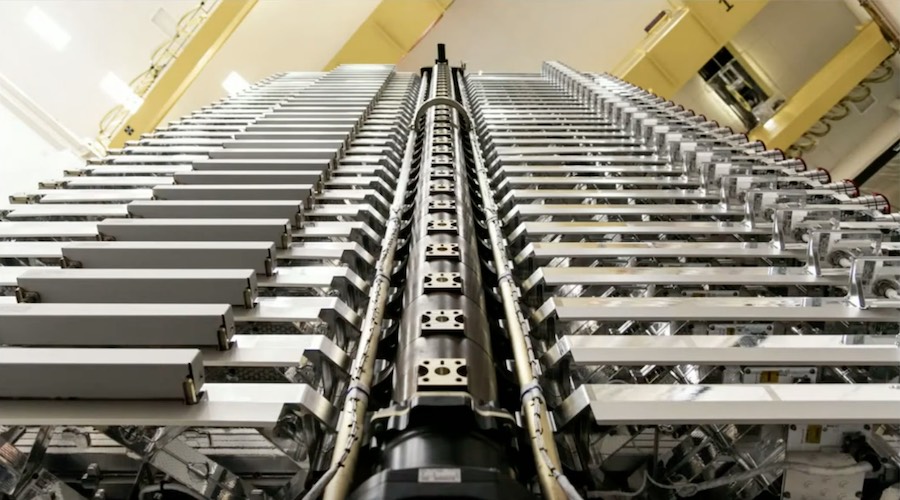
With the 58 satellites set for launch Tuesday, SpaceX will have deployed 653 Starlink nodes on 10 Falcon 9 rockets since May 2019, bringing the network closer to providing initial Internet services.
SpaceX’s previous launch on Aug. 7 delivered 57 Starlink satellites to orbit, along with a pair of Earth-imaging microsatellites for BlackSky, a competitor of Planet in the commercial remote sensing market.
SpaceX’s Starlink network is designed to provide low-latency, high-speed Internet service around the world. Elon Musk, SpaceX’s founder and CEO, also views the Starlink program as a means to earn revenue to help fund the company’s lofty ambitions to develop a next-generation reusable rocket known as Starship, which Musk says could eventually carry people to the moon and Mars.
Each of the flat-panel Starlink satellites weighs about a quarter-ton, and are built by SpaceX in Redmond, Washington. Once in orbit, they will deploy solar panels to begin producing electricity, then activate their krypton ion thrusters to raise their altitude to around 341 miles, or 550 kilometers.
SpaceX says it needs 24 launches to provide Starlink Internet coverage over nearly all of the populated world, and 12 launches could enable coverage of higher latitude regions, such as Canada and the northern United States.
Email the author.
Follow Stephen Clark on Twitter: @StephenClark1.


